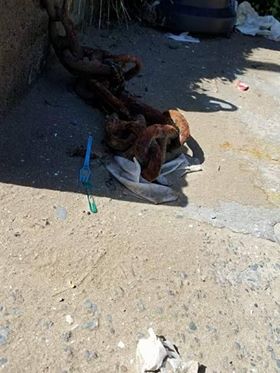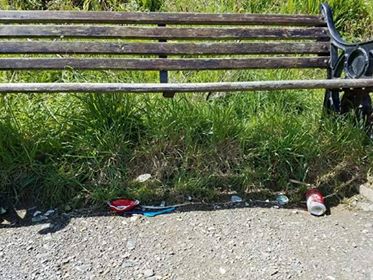Last year a new estimate hit the news stands that by 2050 there will be more plastic in the oceans than actual fish. We know there is plastic in the ocean, but how does it get there? Whilst some individuals directly throw trash onto the beach, others might be unaware that the litter they leave on the ground can make its way into the oceans. Trash that you throw on the ground gets picked up by wind and storms and blows into waterways like streams and rivers, ultimately carrying it into the oceans. Imagine the effect this plastic disposal could have on the environment if an entire country just casually disposed of it?
The average plastic bottle is estimated to take around 450 years to degrade. As these plastics start to break down in the ocean, they can often be mistaken for food, causing many marine animals to accidentally ingest it. There have been many examples of marine animals and bird species that have been found with plastic in their stomach over the past few years. This plastic can also accumulate up the food chain. If a fish has plastic in their stomach and then is eaten by a predator, like a human, then that predator now has ingested the plastic too.
For the month of June, we will be taking part in a challenge (http://www.mcsuk.org/plasticchallenge), where we aim to give up single use plastics to better our environment. If you take a look around right now, I’m sure it will be easy to spot plastic. Plastic is all around us, but they aren’t all created equally. Many of the plastics are made with chemicals that have had connections to diseases and illnesses. Some plastics are only good for single use and some are a tougher plastic that can be used to reheat food in. Here is a quick break down of the different types of plastic and a few alternatives for you to consider.
| Plastic Type | Common use | Alternative |
| 1 Polyethylene Terephthalate | Plastic water and soda bottles | reusable water bottle |
| 2 High Density Polyethylene | Milk jugs | glass milk bottle |
| 3 Vinylor Polyvinyl Chloride | Plastic food wrappers and shower curtains | without a wrapper and a cloth shower curtain |
| 4 Low Density Polyethylene | Plastic bags and six pack rings for drinks | cloth bags and individual glass bottles |
| 5 Polypropylene | Disposable food containers | reusable containers |
| 6 Polystyrene | Styrofoam, disposable knives, forks, and spoons | Wooden utensils, metal utensils, reusable containers, and cardboard containers |
| 7 Other Polycarbonate | 5 gallon reusable bottles | Glass reusable bottles |
http://www.sustainablebabysteps.com/types-of-plastics.html
A few other alternatives for every day uses:
Straws-Metal straws/ no straw
Ziplock bags- Glass or stainless steel containers
Plastic cooking utensils- wood or stainless steel utensils
Prepackaged grain- bring your own container to bulk shops
Liquid hand soap container- bar soap
Plastic bag for fruit- cut out the plastic bag or bring a small reusable bag.
Do you have other alternatives that you use to cut down on the plastic in your life?
Cutting plastic out of your life style can be difficult, but every little bit helps. Try to live by the three R’s. REDUCE the amount of plastic you use, REUSE plastic like plastic bags, and Recycle anything that can be recycled. Are you ready to take the challenge with us?
Written by Andrea Hutwagner, Research Intern, 2017


























